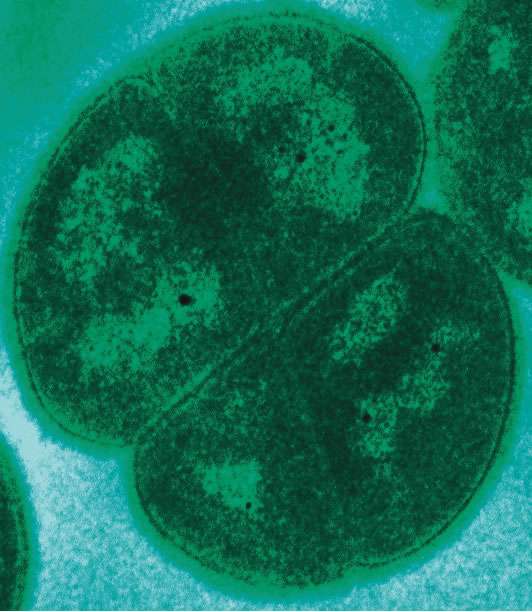Bacteria survive one year on the outer shell of the ISS
Bacteria of genus Deinococcus are known for their ability to survive even the harshest conditions. Deinococcus radiodurans, for example, is barely bothered by radiation. If a person receives a dose of 10 Gy, he will die within one to two weeks (as happened to the victims of atomic bombings). Deinococcus radiodurans, in contrast, will begin to gradually sicken starting at 10,000 Gy, but will then recover. At 17,500 Gy, a third of the population will still survive; individual specimens can survive doses of 30,000 Gy.
The round cells of this genus, which are usually reddish due to pigment, have already been found in the most unlikely locations: in geothermal springs, on rotting meat, in llama manure, and in Antarctic granite. Deinococcus aetherius has been isolated from the stratosphere, a layer of the Earth’s atmosphere ranging from an altitude of about 10 miles (15 km) up to 30 miles (50 km). The temperature there is between 0 and -60 degrees Celsius, and the air is dry and very thin.
For one year, Deinococcus aetherius also traveled along on board the International Space Station (ISS), and not as a stowaway, but as part of a Japanese experiment by the name of Tanpopo (“dandelion”). One of the objectives of this experiment was to test the panspermia hypothesis: the idea that primitive, but hardy organisms might have come to Earth from outer space. The first question to be answered: do these organisms actually exist?
To try to answer this question, scientists mounted specimens of Deinococcus aetherius on the outer wall of the Japanese Kibo module. The specimens were protected from direct solar irradiation, so that they did not heat up over 80 degrees Celsius. Measurements showed that they were not exposed to temperatures below -21 degrees Celsius or above 24 degrees Celsius. However, the bacteria were not protected from cosmic radiation or the vacuum of space.
The evaluation, however, showed that the bacteria protected themselves. The more layers located above them, the greater the percentage of survivors. In a cell layer with a thickness of 100 micrometers, none of the bacteria survived; for a thickness of 500 and 1000 micrometers, approximately six to seven of every 10,000 bacteria survived the procedure. The scientists interpret these results to mean that panspermia might have been possible in a similar way.
